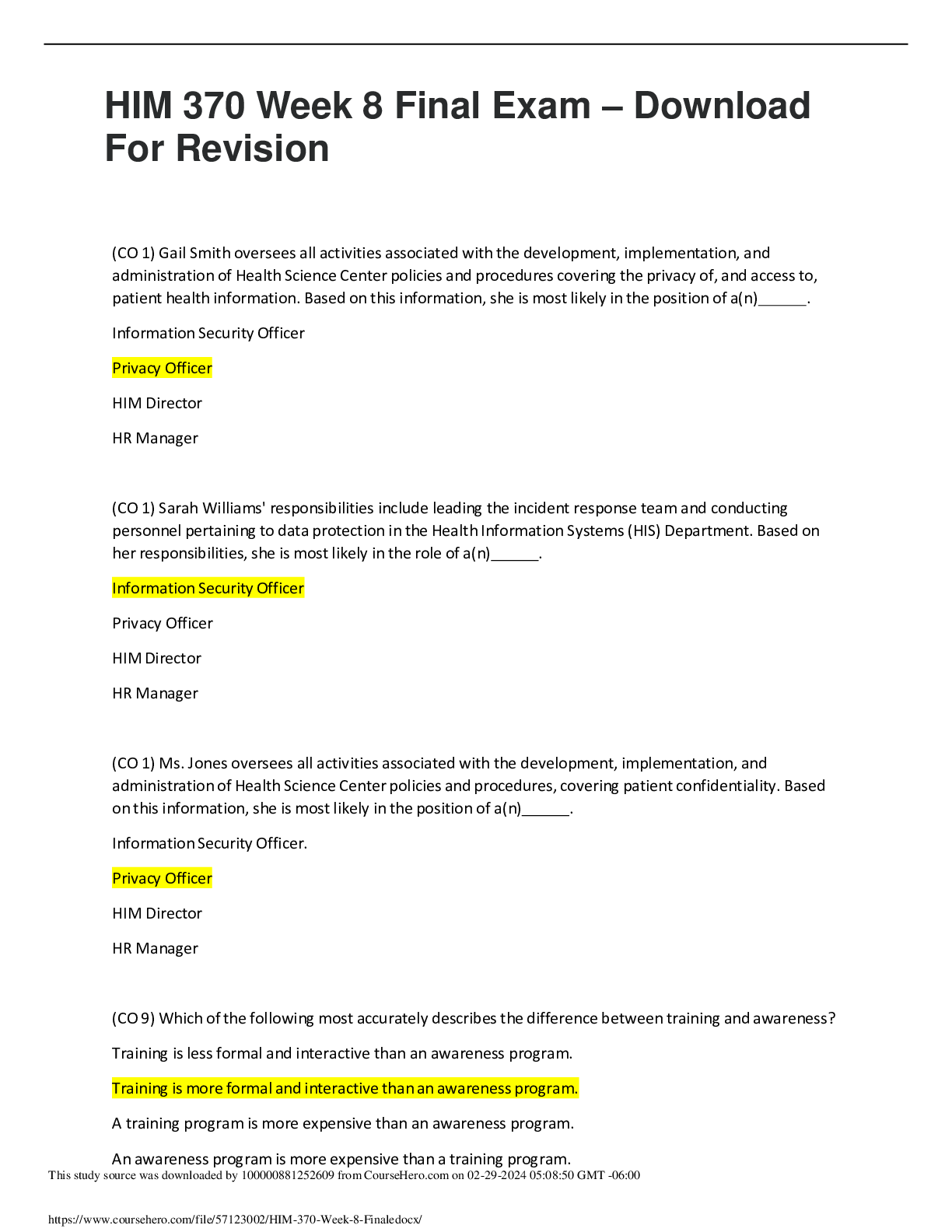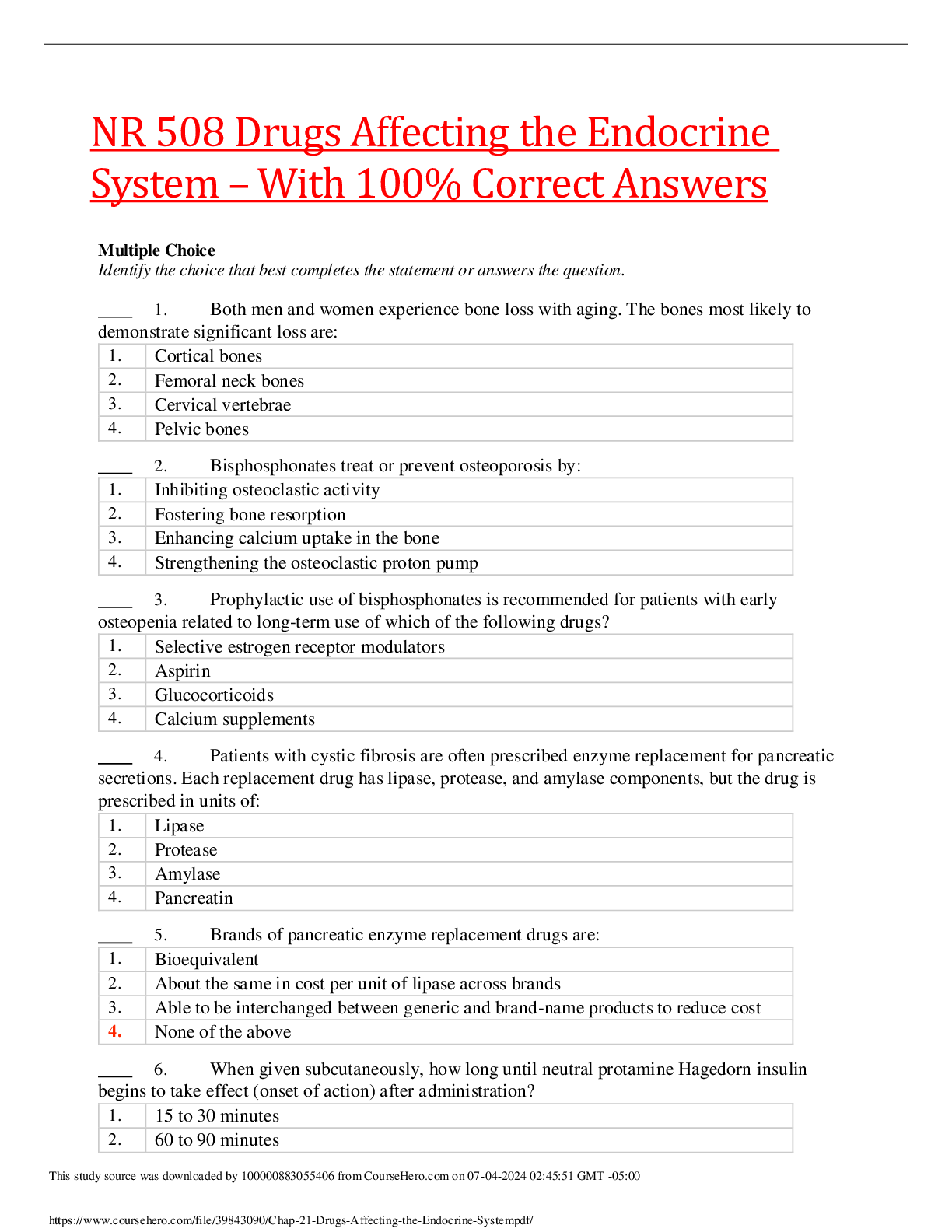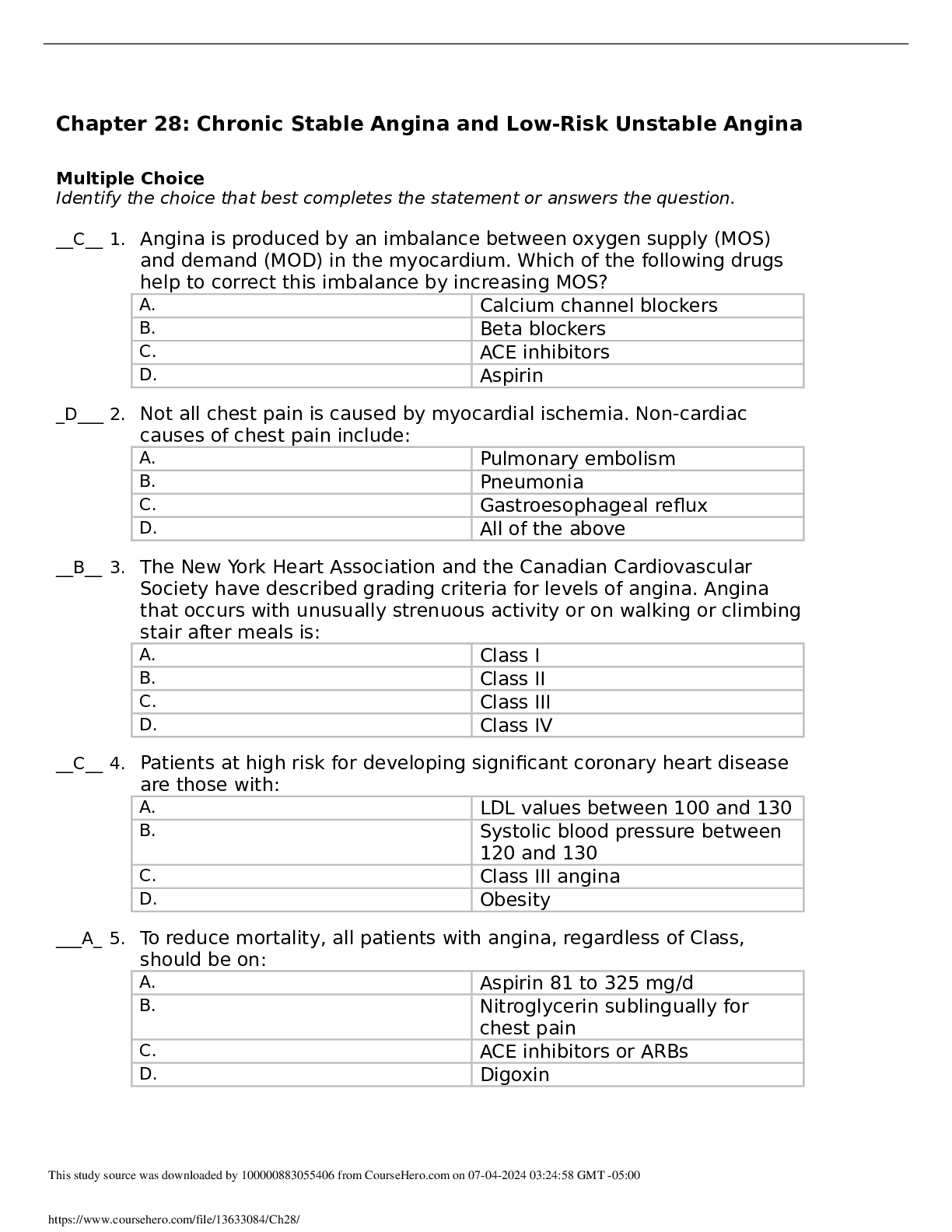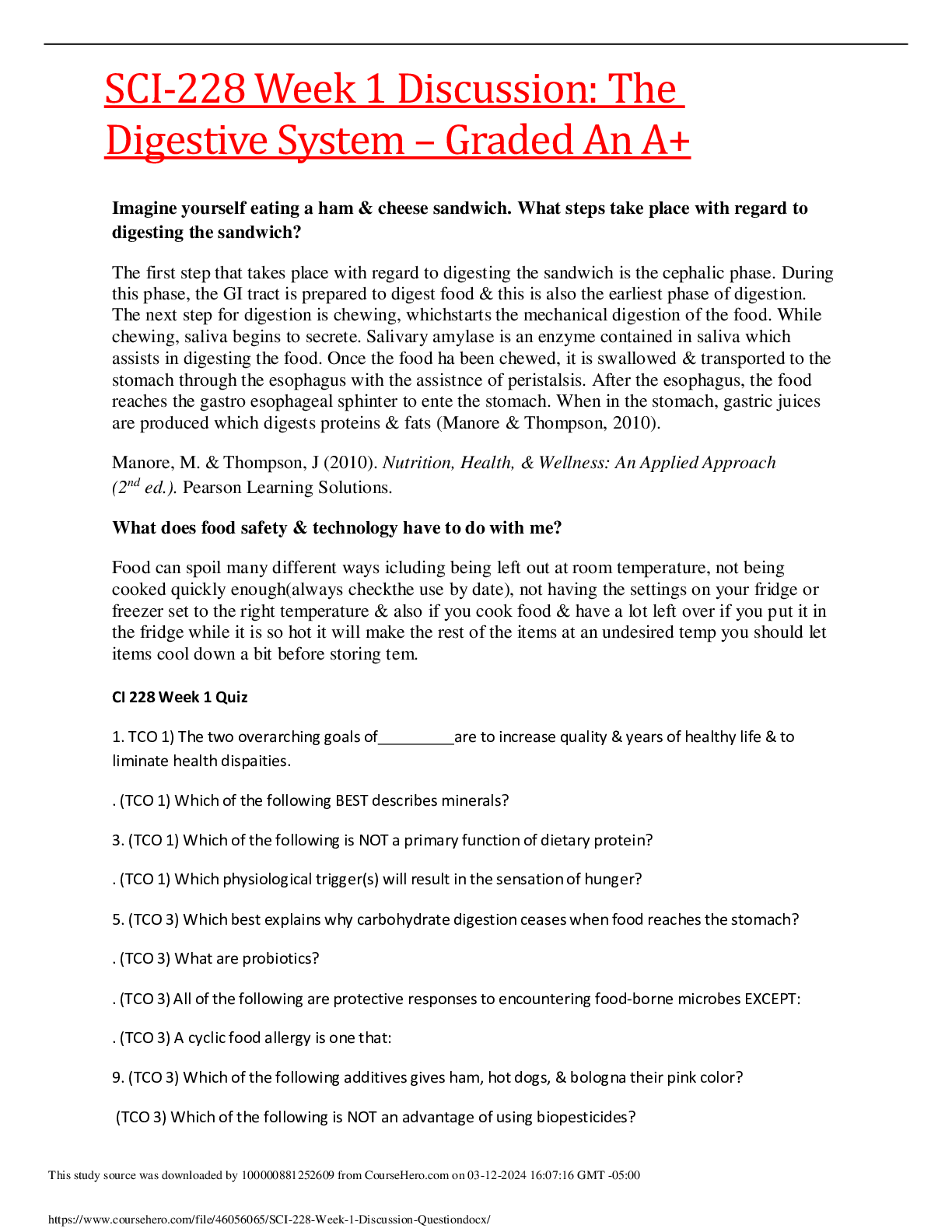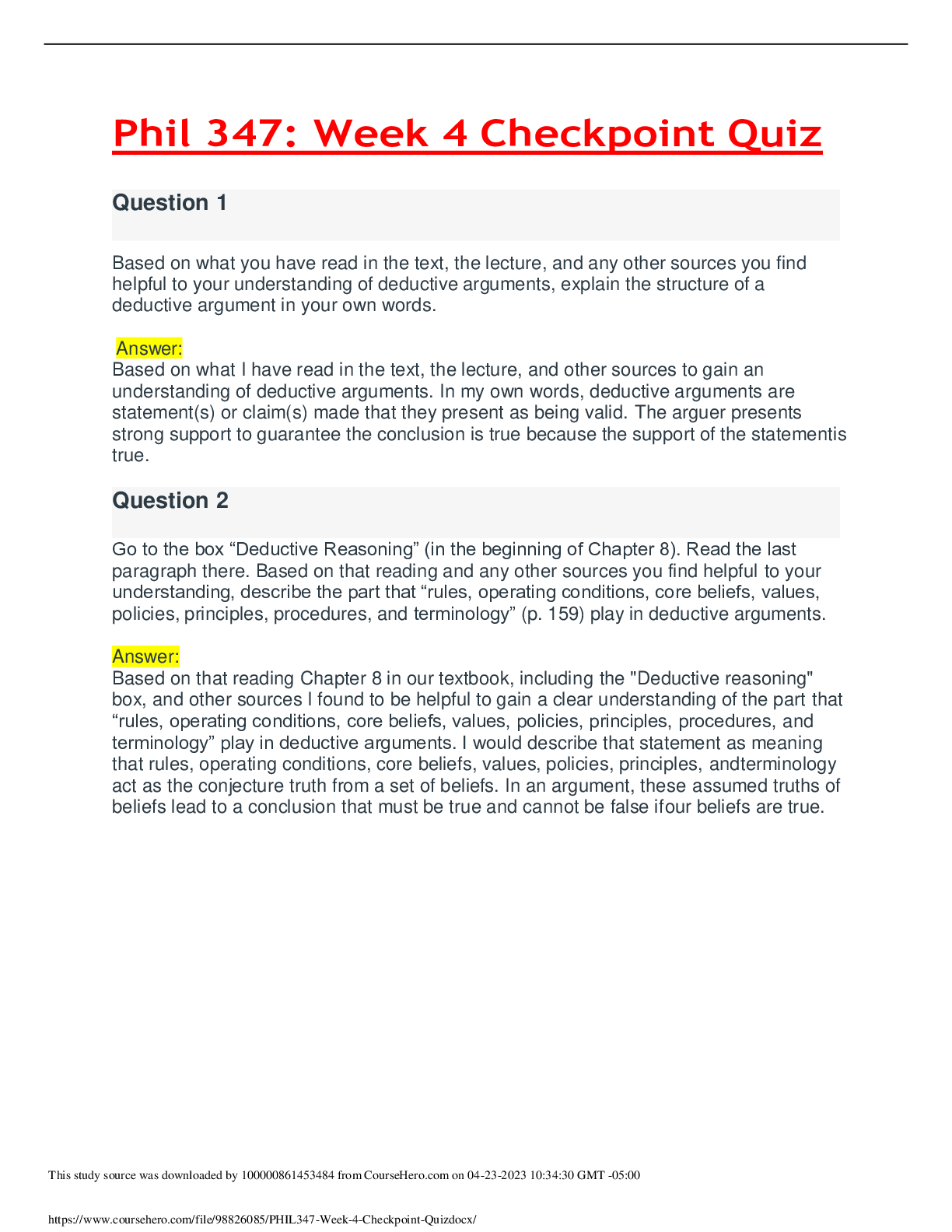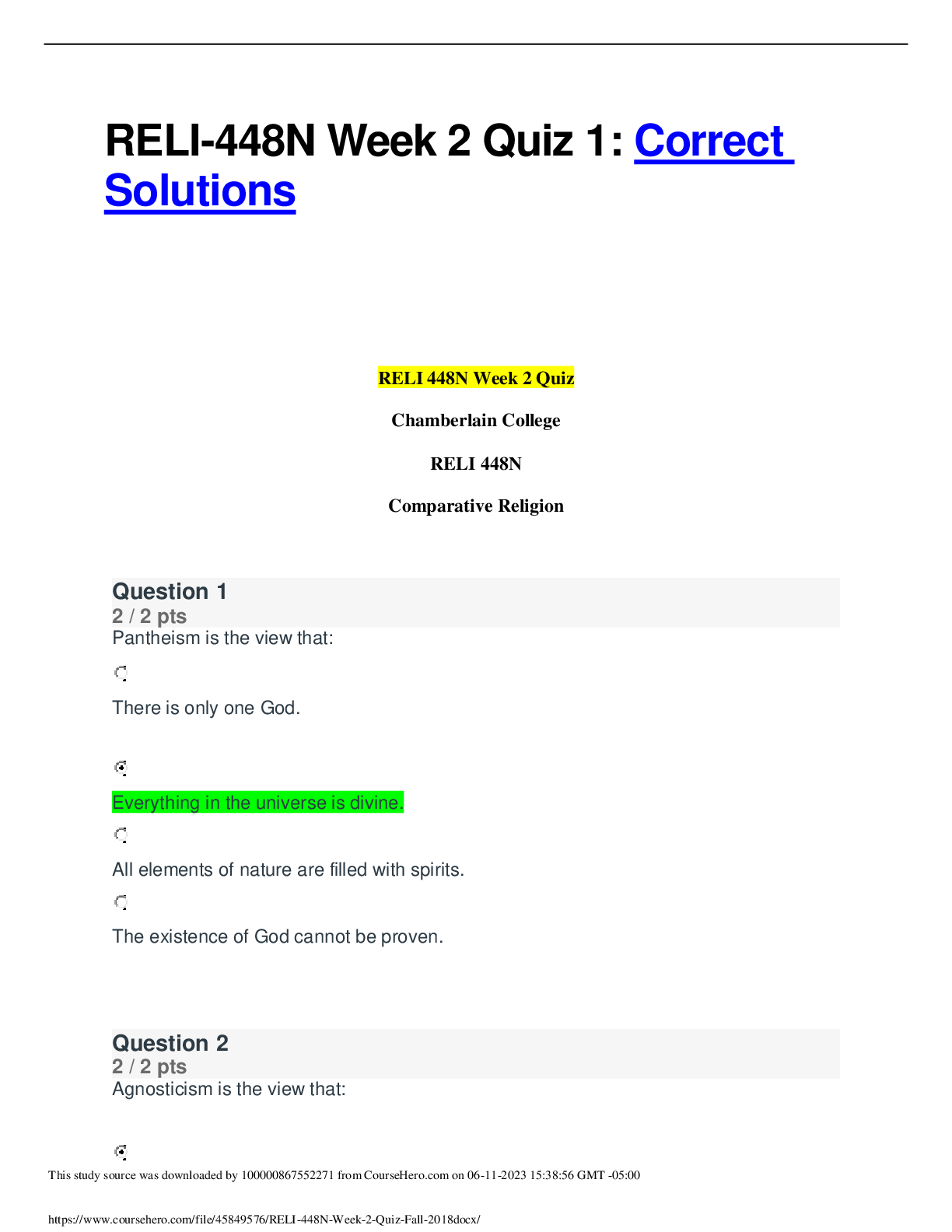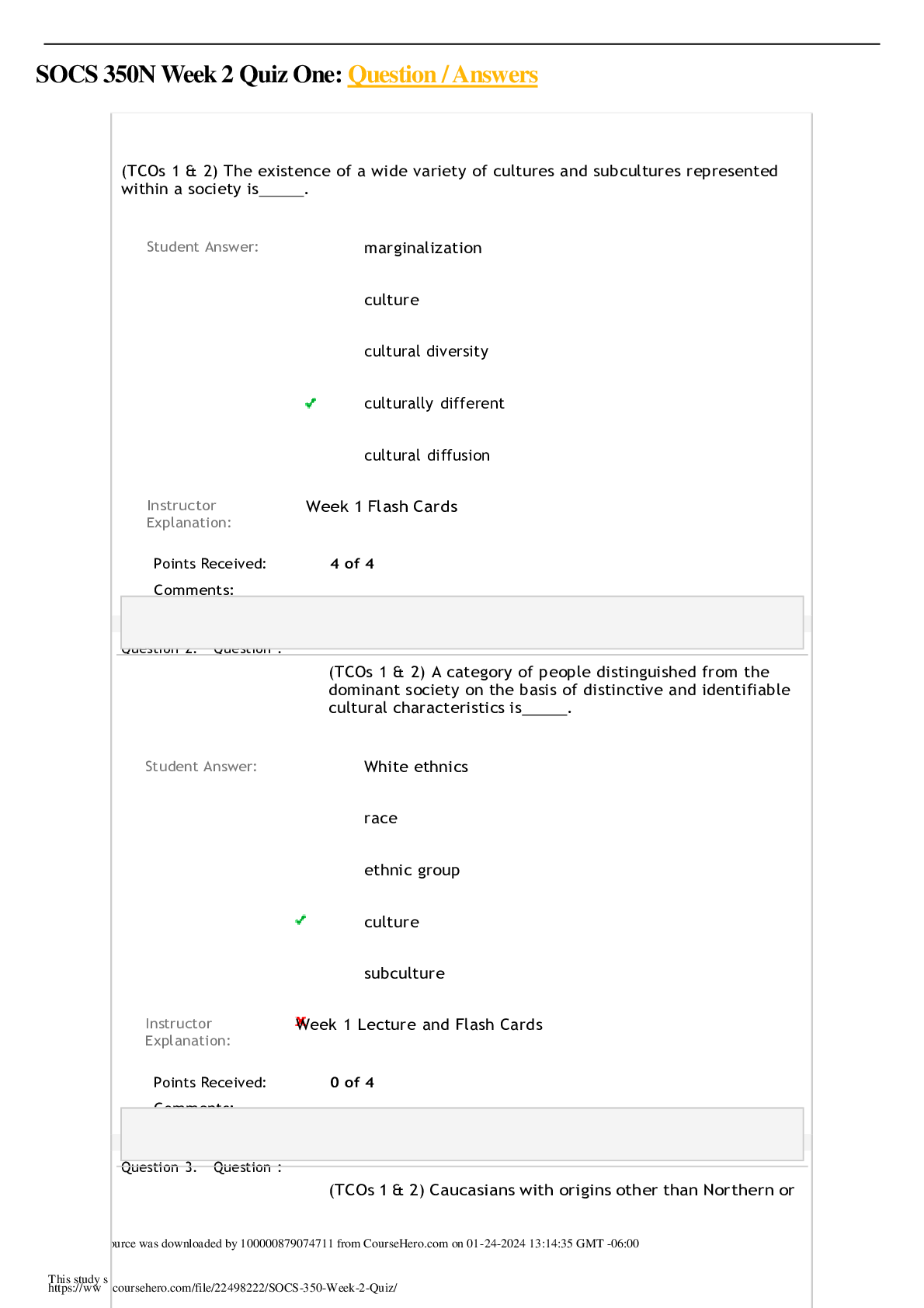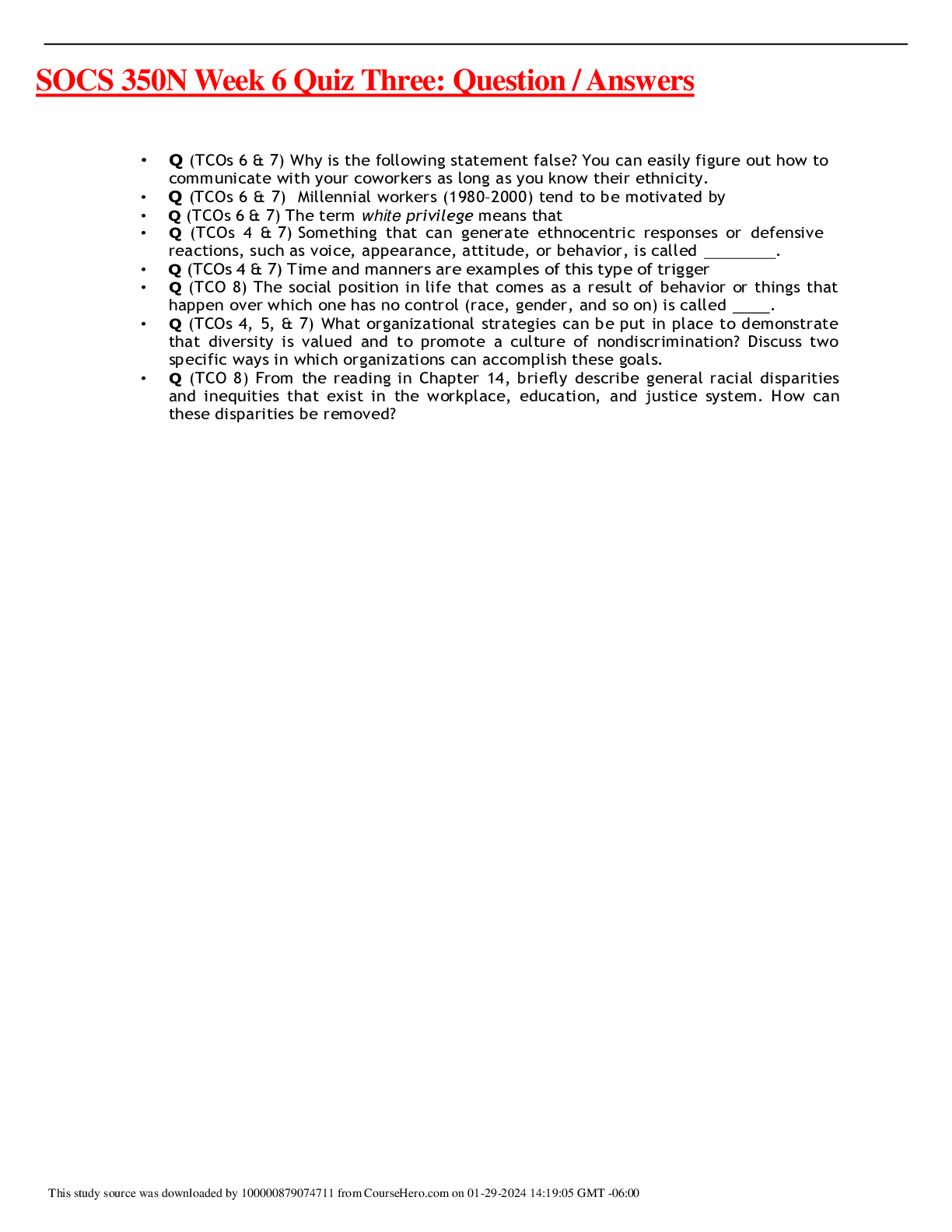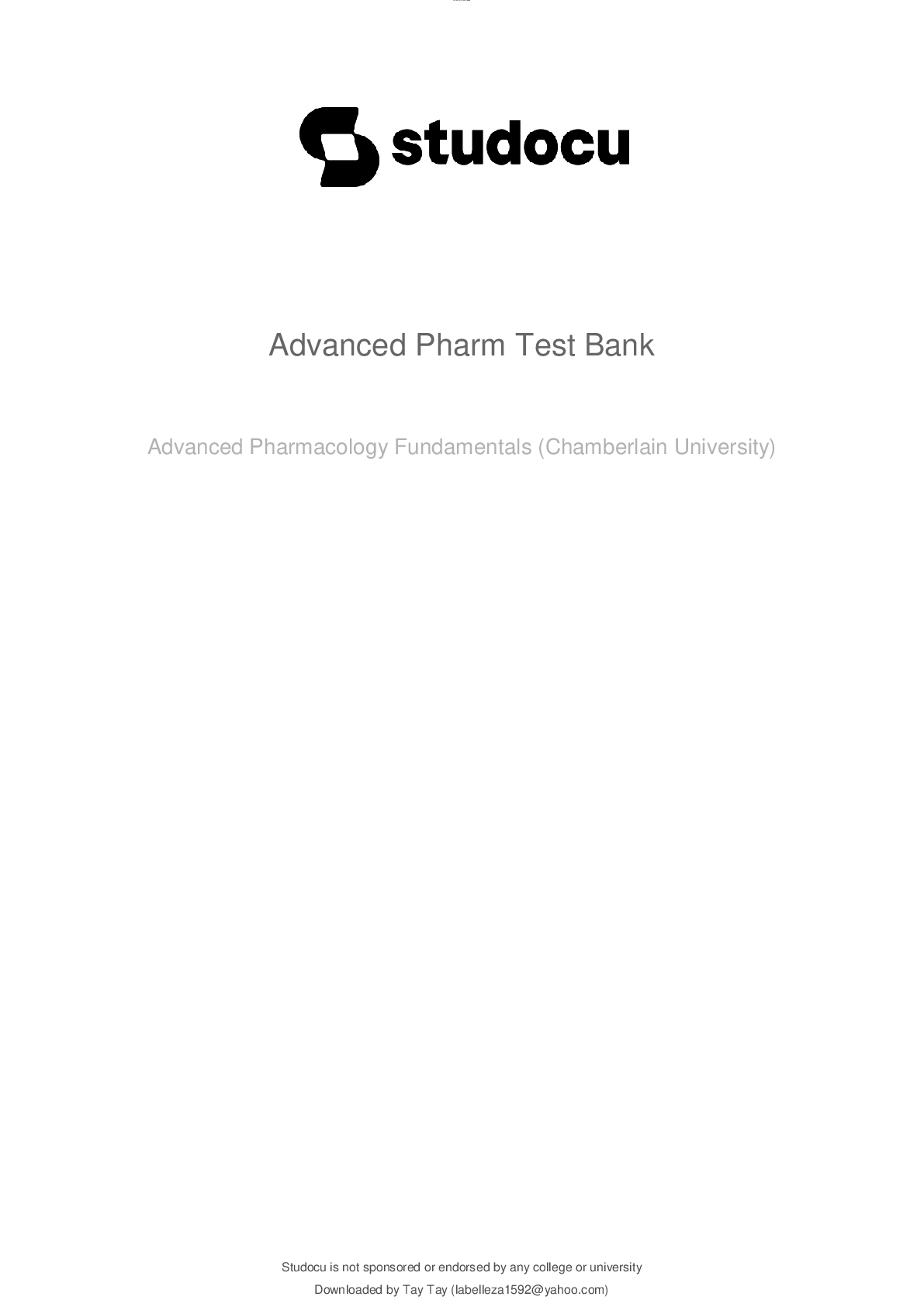Pharmacology for Nursing Care > QUESTIONS & ANSWERS > NR 508 Chapter 28: Chronic Stable Angina and Low-Risk Unstable Angina – With 100% Correct Answers (All)
NR 508 Chapter 28: Chronic Stable Angina and Low-Risk Unstable Angina – With 100% Correct Answers
Document Content and Description Below
NR 508 Chapter 28: Chronic Stable Angina and Low-Risk Unstable Angina – With 100% Correct Answers Multiple Choice Identify the choice that best completes the statement or answers the question. ... C 1. Angina is produced by an imbalance between oxygen supply (MOS) and demand (MOD) in the myocardium. Which of the following drugs help to correct this imbalance by increasing MOS? A. Calcium channel blockers B. Beta blockers C. ACE inhibitors D. Aspirin _D 2. Not all chest pain is caused by myocardial ischemia. Non-cardiac causes of chest pain include: A. Pulmonary embolism B. Pneumonia C. Gastroesophageal reflux D. All of the above B 3. The New York Heart Association and the Canadian Cardiovascular Society have described grading criteria for levels of angina. Angina that occurs with unusually strenuous activity or on walking or climbing stair after meals is: A. Class I B. Class II C. Class III D. Class IV C 4. Patients at high risk for developing significant coronary heart disease are those with: A. LDL values between 100 and 130 B. Systolic blood pressure between 120 and 130 C. Class III angina D. Obesity A_ 5. To reduce mortality, all patients with angina, regardless of Class, should be on: A. Aspirin 81 to 325 mg/d B. Nitroglycerin sublingually for chest pain C. ACE inhibitors or ARBs D. Digoxin C 6. Patients who have angina, regardless of Class, who are also diabetic, should be on: A. Nitrates B. Beta blockers C. ACE inhibitors D. Calcium channel blockers B 7. Management of all types and grades of angina includes the use of lifestyle modification to reduce risk factors. Which of these modifications are appropriate for which reason? Both the modification and the reason for it must be true for the answer to be correct. A. Lose at least 10 pounds of body weight. Excessive weight increases cardiac workload. B. Reduce sodium intake to no more than 2,400 mg of sodium. Sodium increases blood volume and cardiac workload. C. Increase potassium intake to at least 100 mEq/d. The heart needs higher levels of potassium to improve contractility and oxygen supply. D. Intake a moderate amount of alcohol. Moderate intake has been shown by research to improve cardiac function. C 8. Nitrates are especially helpful for patients with angina who also have: A. Heart failure B. Hypertension C. Both A and B D. Neither A nor B A 9. Beta blockers are especially helpful for patients with exertional angina who also have: A. Arrhythmias B. Hypothyroidism C. Hyperlipidemia D. Atherosclerosis _C 10. Rapid-acting nitrates are important for all angina patients. Which of the following are true statements about their use? A. These drugs are useful for immediate symptom relief when the patient is certain it is angina. B. The dose is one sublingual tablet or spray every 5 minutes until the chest pain goes away. C. Take one nitroglycerine tablet or spray at the first sign of angina; repeat every 5 minutes for no more than three doses. If chest pain is still not relieved, go to the hospital. D. All of the above D 11. Isosorbide dinitrate is a long-acting nitrate given BID. The schedule for administration is 7 AM and 2 PM because: A. Long-acting forms have a higher risk for toxicity B. Orthostatic hypotension is a common adverse effect C. It must be taken with milk or food D. Nitrate tolerance can develop B 12. Combinations of a long-acting nitrate and a beta blocker are especially effective in treating angina because: A. Nitrates increase MOS and beta blockers increase MOD B. Their additive affects permit lower doses of both drugs and their adverse reactions cancel each other out. C. They address the pathology of patients with exertional angina who have fixed atherosclerotic coronary heart disease D. All of the above D 13. Although they are often described as helpful in the lay media, which of the following therapies have not been shown to be helpful based on clinical evidence? A. Vitamins C and E B. Co-enzyme Q10 C. Folic acid D. All of the above _A 14. Drug choices to treat angina in older adults differ from those of younger adults only in: A. Consideration of risk factors for diseases associated with and increased in aging B. The placement of drug therapy as a treatment choice before lifestyle changes are tried C. The need for at least three drugs in the treatment regimen because of the complexity of angina in the older adult D. Those with higher risk for silent myocardial infarction (MI) C 15. Which of the following drugs has been associated with increased risk for myocardial infarction (MI) in women? A. Aspirin B. Beta blockers C. Estrogen replacement D. Lipid-lowering agents C 16. Cost of antianginal drug therapy should be considered in drug selection because of all of the following EXCEPT: A. Patients often require multiple drugs B. A large number of angina patients are older adults on fixed incomes C. Generic formulations may be cheaper but are rarely bioequivalent D. Lack of drug selectivity may result in increased adverse reactions B 17. Five questions should be asked during the follow up of any angina patient. They include: A. Have there been any changes in lab data since the last visit? B. Has the level of physical activity associated with the angina changed since the last visit? C. Have new risk factors come to light in producing the angina? D. Is the patient filling prescriptions and taking the drugs as prescribed? B 18. Situations that suggest referral to a specialist is appropriate include: A. When chronic stable angina becomes unpredictable in its characteristics and precipitating factors B. When a post-MI patient develops new-onset angina C. When standard therapy is not successful in improving exercise tolerance or reducing the incidence of angina D. All of the above Chapter 28: Chronic Stable Angina and Low-Risk Unstable Angina Answer Section MULTIPLE CHOICE 1. ANS: C PTS: 1 2. ANS: D PTS: 1 3. ANS: B PTS: 1 4. ANS: C PTS: 1 5. ANS: A PTS: 1 6. ANS: C PTS: 1 7. ANS: B PTS: 1 8. ANS: C PTS: 1 9. ANS: A PTS: 1 10. ANS: C PTS: 1 11. ANS: D PTS: 1 12. ANS: B PTS: 1 13. ANS: D PTS: 1 14. ANS: A PTS: 1 15. ANS: C PTS: 1 16. ANS: C PTS: 1 17. ANS: B PTS: 1 18. ANS: D PTS: 1 [Show More]
Last updated: 1 year ago
Preview 3 out of 5 pages

Loading document previews ...
Buy this document to get the full access instantly
Instant Download Access after purchase
Buy NowInstant download
We Accept:

Reviews( 0 )
$13.50
Can't find what you want? Try our AI powered Search
Document information
Connected school, study & course
About the document
Uploaded On
Jul 05, 2024
Number of pages
5
Written in
Additional information
This document has been written for:
Uploaded
Jul 05, 2024
Downloads
0
Views
49

